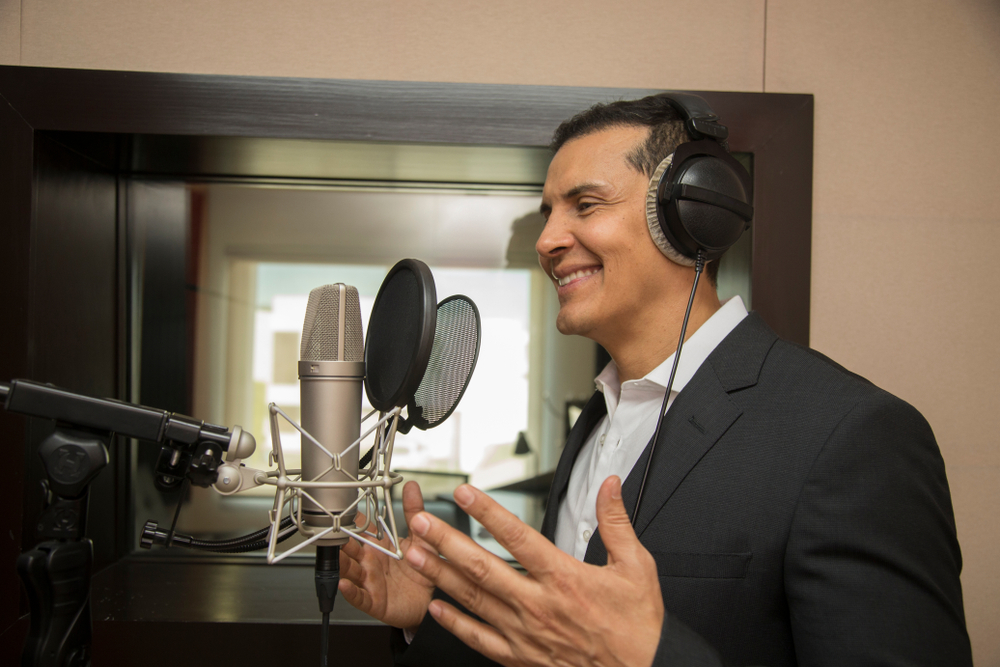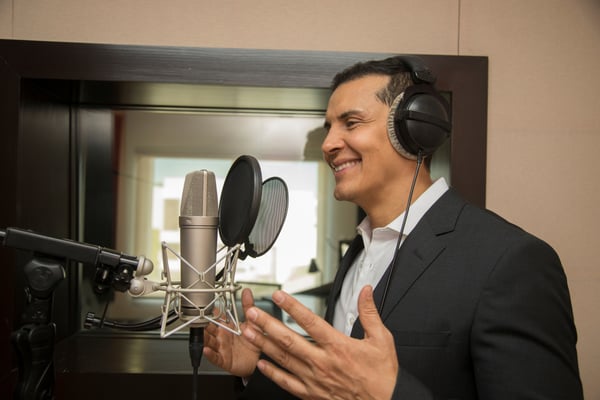Missouri Marketing Resource Blog

Voiceover Tips: 5 Ways to Sound Likeable and Believable

One of the most powerful marketing tools for a business is when a business owner becomes the voice of his or her company. Think Dave from Wendy’s; when he started starring in their ads in the 80s, sales skyrocketed. Dave seemed natural, unaffected, likeable and sincere. He invoked trust. On a subconscious level, viewers must have felt like, if Dave is such a good guy, eating at Wendy’s must be the right thing to do!
This is especially true for local business. There’s something reassuring to listeners about a local business owner who comes across as a good person, who is fully involved with the business and has a vision for how to improve his or her customer’s lives.
Many local businesses do take advantage of this opportunity, but not all businesses do so as successfully as they could – and most often this is because they aren’t naturals at voicing their own ads.
This is not their fault, of course. Public speaking in all its forms is like dancing or playing a musical instrument; it comes more easily to some than to others. But, just like dancing or playing a musical instrument, it does come with a set of ‘good form’ tips that can at least help nudge one in the right direction. The rest is practice!
Tip 1: Smile
As basic as the instruction sounds, smiling does have a way of setting off an internal chain reaction. The physical act of smiling can almost trick the brain into ‘happy’ mode, which of course will affect how you deliver your script lines; causing a more positive tone that sounds pleasant and is disarming to the listener. Try it: say “Hi, my name is (-----)” with no expression. Now smile and say it again. Notice any difference? If not, try again with the INTENTION of letting the smile affect your delivery and listen for the improvement.
Tip 2: Emphasize the Right Words
If you put emphasis on the right words, it can help your delivery as well as help the listener follow your meaning. Consider this statement: “I didn’t say we should bring our pet”…
- I didn’t say we should bring our pet. (Someone else said we should bring our pet.)
- I didn’t say we should bring our pet. (I am denying saying it.)
- I didn’t say we should bring our pet. (I implied it / whispered it / wrote it down.)
- I didn’t say we should bring our pet. (I said someone else should bring our pet)
- I didn’t say we should bring our pet. (I said we shouldn’t bring our pet / we must bring our pet)
- I didn’t say we should bring our pet. (I said we should leave our pet)
- I didn’t say we should bring our pet. (We should bring someone else’s pet)
- I didn’t say we should bring our pet. (I said to bring something else)
That one short statement alone has at least 8 possible subtexts! All it took was picking a different word to emphasize. What is the subtext of your ad? Choosing certain words for emphasis also helps you to sound more like what you are saying is coming from YOU, rather than the piece of paper in your hand.
Tip 3: Pretend You’re Reading a Bedtime Story
There’s a big difference between the way we read aloud to other adults versus how we read aloud to a classroom of kindergartners. Usually, the latter is much more interesting – more animated, more enthusiastic, more purposeful. We want young children to follow the meaning and stay engaged, so we talk a little more slowly and enunciate a bit more intently. We infuse our words with character and a little extra energy. We may even try out a character voice or two. Most people are very self-conscious about reading aloud, especially when a microphone is pointed at their face… but remember: no one can see you; they will only hear you. Though you may feel like a clown trying to “read to a class of children” with only the studio engineer there in front of you, you will SOUND much more likeable, confident and authoritative to the audience for which your message is intended. Trying to ‘play it cool’ in the studio most often translates to a dry, monotonous and possibly even off-putting delivery. We can’t all be Sam Elliot or Morgan Freeman!
Tip 4: Put it in Your Own Words
It’s difficult to sell a script that reads in a language that no one really uses on a day to day basis. Unnatural statements, sales speak, run-ons, sounding like an auctioneer, and so forth typically resort from two things: 1) trying to squeeze too many points into 30 seconds and 2) trying to read aloud from a script that doesn’t resemble normal conversation. There are two solutions:
1) Just pick one compelling point – the one that most benefits the listener – and cut the rest. Use the extra space to slow down and speak from the heart or expand on a compelling point. For example, if two of your points are “we’ve been making mattresses since 1973” and “you’re gonna feel more rested than you ever have before”, cut the first statement and keep the second. Most listeners will care more about getting a good night’s sleep, having more energy, and looking younger then they will about how long you’ve been selling mattresses. Keeping one important point and cutting the rest frees you from the constraints of a script that doesn’t sound like you; now you have room to make it your own.
2) Either re-write the script in your own words, or simply talk from the heart and let the production engineers edit to 30 seconds. Do whatever it takes to sound as natural and conversational as possible. We record business owners and customer testimonials all of the time – it’s amazing how often we get the best audio AFTER the guest has finished reading the script! They’ll continue casually talking about their business or their customer experience in their own words and true conversational style. Hopefully we’re still recording… because this almost ALWAYS comes across more likeable, more compelling and more convincing than the “official” take.
TIP 5: Relax and Take Your Time
Most client recording sessions take 15 minutes or less – even as a testimonial without a script – and that’s with pauses and casual conversation included. If you've booked yourself enough time to record (at least 30 minutes in the studio), then you shouldn’t have to feel rushed on a 30 or 60 second script. You never need to worry about taking up the engineer’s time... We’re there to get the best audio possible and we’ve booked ourselves enough time to get it done.
In some cases, our client hasn’t had a chance to review the script and rehearse it ahead of time. In those cases, we recommend not trying to read aloud through the whole script all at once; instead, carefully consider each sentence before reading aloud. Don’t try to say it aloud until the meaning is crystal clear in your mind. Once that sentence sounds natural when spoken, pause and carefully consider the next sentence before reading aloud – and so forth. You can take as much time as you need in between sentences, because silence is easy to delete! It’s much more challenging to edit rushed statements or words that run into each other due to a hasty read.
If you have any inclination to be the voice of your brand, we encourage you to give it a try! There’s no need to be intimidated by the prospect of reading aloud to an engineer with a mic pointed at your face –the professionals at Zimmer Communications work with business owners and customers every day and we enjoy it. We want you to enjoy it too. Ultimately, our goal is the same as yours: to make you sound great!

